If there’s one thing that Spain is known for around the world is for its food! Far from being the only attraction, food definitely plays a massively important role in the Spanish culture, and it is impossible to remain indifferent to the variety and freshness of Spanish cuisine. Even though fantastic food can be found pretty much everywhere in Spain, there is a number of culinary hubs that stand out as unique, and that can serve in themselves as the sole reason to visit the regions where they are located.
If your mouth is watering already, let us go ahead and introduce you to some of the most amazing and sometimes well-hidden gems of the Spanish gastronomy. We will tell you where you should go and why these locations are unmissable if you are a foodie.
Come and travel through the best of Spanish cuisine with us, one mouthful at a time!
San Sebastián (Donostia)
.jpg?width=690&height=460&name=San%20Sebasti%C3%A1n%20(Donostia).jpg)
Many refer to San Sebastián or Donostia (as the locals call it), in the Basque Country, in the North coast of Spain, as the capital of Spanish gastronomy. With a stunning scenario of mountains and lush green woods to one side and the immense ocean front to the other, San Sebastián’s chefs certainly have the raw-material to excel in culinary terms. And they do! The city boasts no less than 33 restaurants with a Michelin distinction, and counting.
The incredibly beautiful capital, with a Belle Époque feel, of long beach promenades, romantic bridges and vibrant cultural scene has been on the spotlight over the years as one of the rising stars of Spanish tourism, but also as the object of curiosity of many culinary experts. There is a long tradition of tapas food, which in the Basque Country are called pintxos, commonly found in bars everywhere. The origin of pintxos comes from centuries ago and precisely from San Sebastian, when some bar owners, knowing about the great financial difficulties of the locals, started to create miniature portions of food, similar to canapés, at affordable prices, to serve them on their bars so that they could attract customers. The tradition remained to this day, and pintxo bar crawls are something of a daily habit in the city.
The restaurants in San Sebastián work with prime ingredients, fresh from the origin, and many of them focus on fish and seafood as their specialty. The pristine, cold-water coast and the fertile land around provide for a variety of high-quality ingredients. Among the most well-known dishes of San Sebastián (Donostia) are the bacalao pil pil (cod fried in olive oil until the skin becomes crispy and the juices emulsify), percebes (goose barnacles), squid in its own ink and kokotxas (a stew made with cod or hake cheeks).
Make sure to book your preferred restaurants in advance, as many visitors pilgrimage through the region in search of the best dining experiences and restaurants can get fully booked months in advance! Even so, the wait is totally worth it. But instead of taking our word for it, you need to go and taste it for yourself!
La Rioja
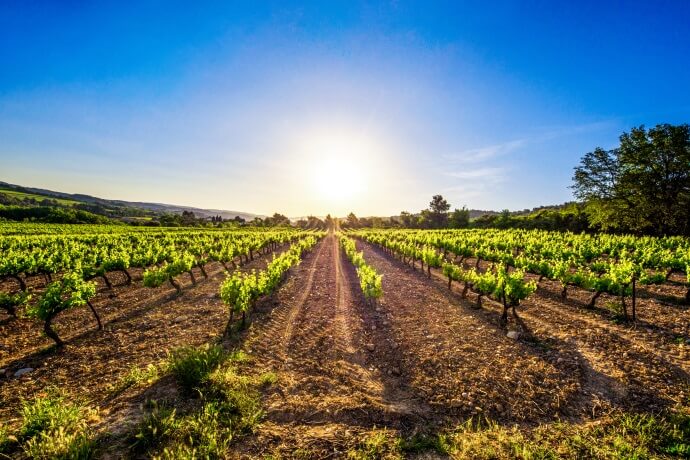
The name of this province in the far North East of Spain, close to the border with France, is probably enough to remind you of the finest wines of the country, which are also internationally popular. Yes, La Rioja is one of the best wine regions in Spain and even in the world, so we surely recommend taking some time to visit the region if you are a wine lover, as there are more than 500 wine estates here!
In 1933, La Rioja was the first Spanish region to earn the DO (Denominación de Origen or Denomination of Origin) classification, which later was upgraded to the higher DOC (Denominación de Origen Calificada or Qualified Denomination of Origin). Most part of the wine produced in the region is red wine with a fruity aftertaste. The most popular grape types are berry-scented kinds, like Garnacha and Tempranillo. The impressive vineyards, some of them dating back to the Roman times, run along the banks of the River Ebro and they stretch for over 100Km (62mi), providing for some unique landscapes of natural beauty.
The region is part of El Camino, or the Way of Saint James, leading to Santiago de Compostela in Galicia in the far West of the country, and has some breathtaking landscapes of bucolic hills and heaths dotted with multicolored flowers and surrounded by vineyards. A day spent in the region hiking or driving along the Sierra de Cebollera Natural Park or the Arnedillo Biosphere Reserve, or visiting the capital city of the region, Logroño, and the nearby monasteries of Suso and Yuso, both UNESCO Heritage sites, can be exhausting, so unwinding at the end of the day, with a glass of good La Rioja wine, may be in order!
Whichever the length of your trip might be, we are absolutely sure that, once in La Rioja, you will find it hard to leave!
Valencia
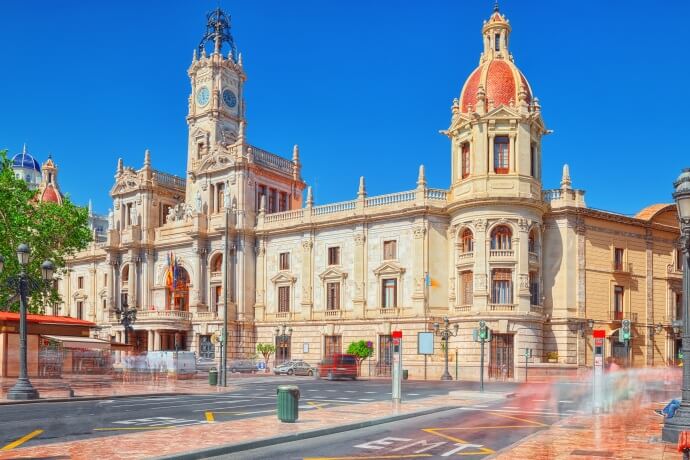
Valencia equals paella! This is the most replicated of Spanish dishes around the world and yet it is impossible to taste real paella before coming to Valencia! It is probably because of the locally sourced ingredients, the freshest of fishes caught on the nearby coast or maybe because of that special secret ingredient that is different for everyone. What we can safely say is that there is no match for Valencia’s paella, and the city absolutely needs to be included in a food tour of Spain or of the region of Catalonia.
Valencia is an amazingly modern city that all the while respecting its traditions and folk, moved boldly forward to the future and is nowadays a reference in modern art and technology in Europe. Proof of this is the complex of themed buildings by Spanish architect Santiago Calatrava, called Ciudad de las Artes y las Ciencias (City of Arts and Sciences); the incredibly organized Turia Garden or even the modern Oceanogràfic (a massive size Aquarium), all just a short distance away from the old town of Ciutat Vella, where you will find the 750 years old Cathedral, the Mercado Central, one of the oldest in Spain, or the unbelievable Llotja de la Seda, the old silk market built in Gothic style and classified as a UNESCO Heritage Site.
You will also find a vibrant gastronomic scene with multiple restaurants mixing ancient and innovative recipes in an explosion of flavors and colors as thrilling as the city that hosts them. Paella has come a long way since its origin but here you will find it still tastes of authenticity!
Gijón

Gijón, located in the Asturias province in Spain, grew from a small promontory facing the Cantabrian Sea. It is here in Gijón that the full splendor of Asturias can be seen and better enjoyed. The hill of Santa Catalina and the nearby fishing neighborhood of Cimadevilla are the best starting points for a walking tour around the city. A city that is sparkling clean and organized, that blends incredibly well its old heritage with the modern aspects of life, and that boasts an absolutely amazing cuisine, using fresh ingredients from the surrounding coast, mountains and farming fields, to serve honest flavors, reminiscent of a world and a time when the pace was slower and the land was greener.
The cultural heritage of the city is spread around the many plazas like Plaza Mayor, where you will find the City Hall, from the 19th century; the Plaza del Marqués, near the marina, where you will see the Palace of Revillagigedo and the Collegiate Church of San Juan Bautista, both currently housing modern art exhibitions, or Campo Valdés, where a former 16th-century tobacco factory lives side by side with the ruins of the Roman Baths. The locals are extremely proud of their heritage and find ways to keep it unspoiled. Because of this, Gijón was nominated in the European Commission's EDEN programme (European Destinations of Excellence), in recognition of its sustainable tourism practices.
Food is undeniably part of this culture. Food experts from all over Spain travel here to get inspiration from the apparently simple gastronomy of the Asturian region, which is a combo of land and sea. The main specialties include freshly caught squid, crab, shrimp, and sea bass but also lamb and different chorizos. However, the most famous and therefore sought-after dish in Asturias and especially in Gijón is the tasty fabada asturiana, a thick white-broad-bean’s stew made with an assortment of meats and cured meats. There are numerous versions of this excellent dish but the most important thing to know is that high-quality ingredients are essential when preparing this or any dish in Asturias. We lack the words to describe you the feeling of comfort at every mouthful. You definitely need to come and check for yourself!
Pontevedra
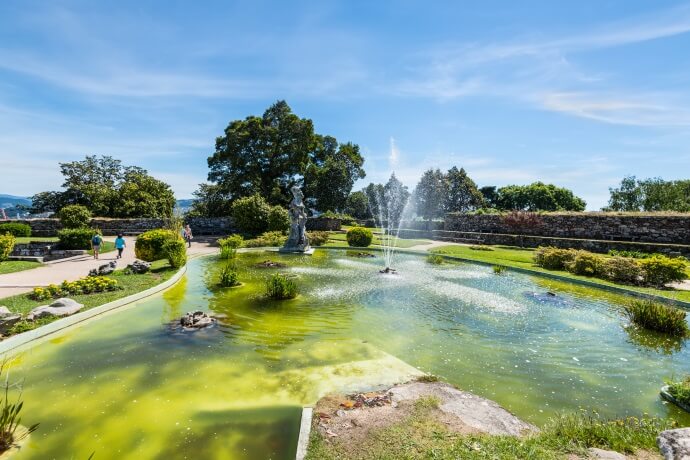
Pontevedra is a city in the Galicia region of Spain, very close to the border with Portugal. Located in the Rias Baixas (or Low Riffles) area, on the way to Santiago de Compostela, this city is quite an example of organization and functionality. So much so that even the UN has considered it one of the best European cities to live in, awarding it the Habitat prize for the quality of its urban life and mobility policies. There is an incredible variety of pedestrian streets and green areas in a city that was already surrounded by an emerald green scenario, almost out of a painting.
The city center’s heritage tells about the history of the Roman Empire in the Iberian Peninsula, but also of a city ruled by fishermen and businessmen who ordered the construction of some of the richest and well adorned buildings in the region. That is the case of the late Baroque Sanctuary of the Pilgrim Virgin from the 18th century; the Church and Convent of San Francisco built between the 14th and the 15th centuries; and also, the Basilica of Santa Maria, a monumental church built in the 16th century through the contribution of the fishermen of the city. The Nature Parks also abound and are within easy reach when driving from the city, so a day trip to the Cíes Islands in the National Park of the Atlantic Islands or to the Nature Reserve of Monte Aloia are excellent options to get to know the region.
With such a pristine landscape and seascape all around, it is only natural that the Galician cuisine has become something of an icon in Spain, and that people travel from miles around to visit Pontevedra and its restaurants. Fish is obviously the main reason for a Galician journey. When in town, you absolutely need to try the shellfish like oysters, cockles and mussels, but also the fresh sardines or trout and lampreys. There are so many options and at such reasonable prices, that you might want to save a few days to explore and to finally decide which one is your favorite!
Cáceres
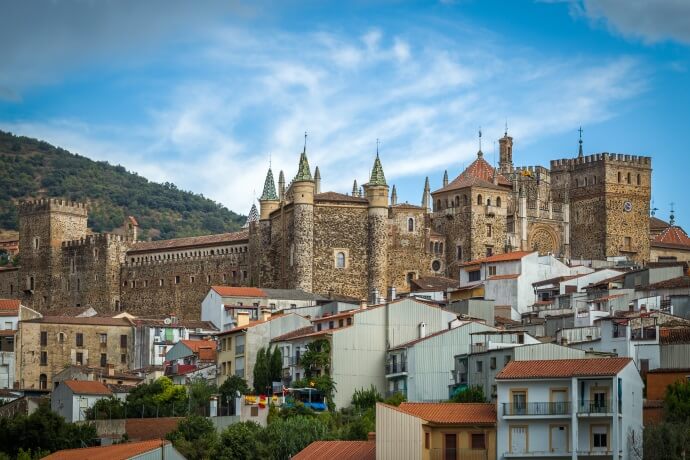
Cáceres is a perfectly preserved walled city in the Extremadura region in the center of Spain. With a strategic location at the center of the Iberian Peninsula, the city has seen the rise and fall of the many people who have fought for the domination of this territory, each one of them leaving their imprint and influence in the local culture.
Walk inside the walls of the millennia old city to find the Plaza Mayor, a perfect stop for a drink and some tapas in one of the many cafes and bars under the arcades that surround it; go through the ancient neighborhoods of the historic center and find the intact mansions, churches and cathedrals of gone-by centuries; go through the Judería Vieja, the old Jewish neighborhood and see its narrow streets with the quaint, whitewashed little houses siding them, and end a perfect day marveling at the sunset views from the nearby Santuário de la Virgen de la Montaña, an 18th-century shrine erected on top of a hill with a stunning view around it.
With a landscape of a few mountains, vast plains, sometimes arid, with cork oak trees dotting the fields and olive groves where Iberian pigs wander in rare freedom, the people of the region of Extremadura went through some rough times in terms of food foraging in the past, but we can safely say that the difficulties only made them more creative and the food more delicious.
Approaching Extremadura gastronomy is discovering a whole world of ingredients and products forged for centuries in the purest nature. Extremadura tastes of wine, cheese, honey, Iberian pork from the Dehesa, Denomination of Origin, paprika from La Vera, and those rural roots of which there are hardly any left. The trip to Cáceres and Extremadura is one of rediscovery, of good surprises, where at every corner you will stumble upon the finest hams, sausages, and cured meats made out of simple, local ingredients. That will most likely awaken memories of childhood and of a time when we were all much more connected to our surrounding nature.
The wealth of its delicacies, its mountains and plains make Extremadura one of the most valuable cuisine hubs in Spain. Proof of this are the ten Denominations of Origin and the two Geographical Indications that it has. A wise use of nature for our lucky palates!
Segóvia
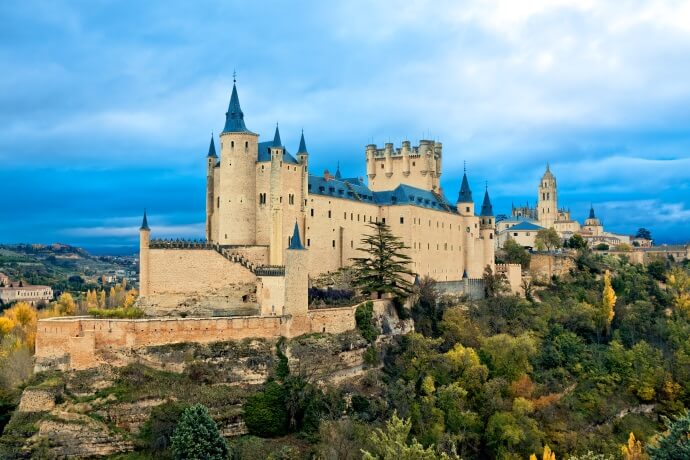
Segóvia is one of those unbelievable places that will grasp you fully, body and soul, from the first moment. Located in the heart of Spain, about 1 hour North of Madrid, Segóvia is like an open-air museum that has been classified as a World Heritage City by UNESCO. The imposing Roman Aqueduct and the 16th-century Gothic cathedral are extraordinarily well preserved and have become landmarks of the city.
Walk the old Jewish neighborhood that opens out to plazas bustling with cafes, tapas bars and overall hustle and bustle, such as the Plaza Mayor and the Plaza del Azoguejo.
One of the main reasons for many tourists to visit Segóvia and the region around it is the famous "cochinillo" (suckling pig)! Essentially, this traditional dish of Segóvia started as a gastronomic invention of Cándido Sanz, a local cook who, taking advantage of the growing tourist demand of the city at the beginning of the 20th century, came up with a recipe made of suckling pig roasted in a wood oven, which he combined with regional flavors and a welcoming manner that turned him into a famous chef in Spain. The recipe is simple: suckling pig, lard and bay leaf. The secret is in the temperature of the oven and how to roast it. Traditionally prepared in an earthenware pot, the suckling pig is roasted slowly until the skin takes on a golden hue. The piglets used in the preparation of this dish should not exceed 6 kg (13lb), with a weight of around 4.5 kg (9lb) being considered ideal.
After a day or two of exploring ancient heritage and fantastic countryside landscapes, we say that the best way to say your goodbyes to Segóvia is to feast on one of its most appreciated and tasty dishes.
Culinary Haven
Spain is definitely a country where you can eat some of the best food in Europe if not in the world, for a very reasonable cost. However, there are places that are special, that have their own specialties and that many people visit having in mind that particular dish that they have read so much about. Even though the choice can be a little hard sometimes, having so much on offer, the fact is that even though we provided you with a list of examples of culinary hubs in Spain, there is a world of other foods to explore that we left out and that could as easily be featured. So go, be daring and you will be rewarded with the best food within the best scenario. We are sure you will be back with your own list of top culinary hubs in Spain!



